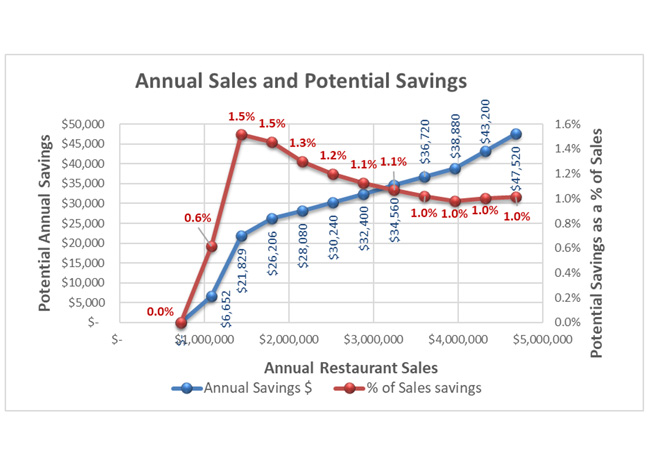The tactical benefits of using voice-activated ordering systems in the drive-thru are many.
Specifically, using this technology can account for up to 50% of the transactional labor from a drive-thru transaction. When you consider the fact that transactional labor can account for 11% to 13% of the restaurant labor deployment, reducing the personnel requirements in the drive-thru can add up quickly.
A couple of chain restaurant operators, though, have taken a look at a bigger picture: how much could a concept save by investing in voice AI for the drive-thru? Painting a clearer picture of this impact requires translating work per check savings into hours per day or per year that a restaurant could save by using AI technology.
Without getting too deep into the details of labor modeling and restaurant staffing calculations, it’s important to note that work content reduction for service activities such as order taking does not typically translate one-to-one reduction in labor hours. That’s because to come up with true labor savings, you need to be able to remove a person from the schedule at some point during the day. For example, if a restaurant needs three people to keep the doors open, no matter how many guests come through the doors, a low-volume location will need, at a minimum, 36 hours to staff a 12-hour period. If that operation realizes a 50% improvement in efficiency but still requires three crew members to take care of the guests, those same 12 hours will still require at least 36 hours of labor.
Running simulations of different volumes with typical sales patterns, we would expect different results at different volumes. A low-volume operation, where minimum staffing is expected in many hours, will see little to no impact by implementing AI ordering in its drive-thru operations.
The following graph applies to a typical drive-thru operation with check averages of $12 to $15 and shows the savings implementing voice AI would generate at various revenue levels. Note how it generates no savings when sales volumes total $2,000 a day or less. Looking at higher volumes, say $8,000 per day, the expected savings rise to about 8 hours a day. With an average wage of $12 per hour that would represent saving approximately 1.07% of sales.

Once the concept surpasses the $1.5 million mark in annual sales, the expected labor savings become even more significant at more than $20,000 per year, which translates into the equivalent of reducing labor costs by 1% to 1.5% of sales. The chart below shows the equivalent annual sales and the potential dollars saved and the percentage of sales it represents.

The data lends credence to the idea that using voice AI can support higher-volume drive-thru operations. Still, there’s more to the story. The theory is that the voice AI system will get better and better as it learns from its interactions with customers. This is really no different than the in-person order taker. It always surprises me how seasoned order takers learn to recognize their patrons’ voices and ordering habits without seeing their faces. These seasoned pros know their customers’ names, what they will order and what to suggest. We should expect something similar from the virtual assistant counterpart as this technology evolves its role within the operation.
As the system learns, additional customization and personalization become possible. Voice-recognition systems can remember previous orders and customer preferences, too. This enables restaurants to offer personalized recommendations and suggestions based on past orders. For instance, a regular customer might hear, “Welcome back John! Would you like your medium latte with soy milk today?” This level of personalization enhances customer loyalty and satisfaction.
Another benefit of voice AI technology is its ability to take orders in multiple languages. Customers can place their orders in their preferred language, eliminating language barriers and ensuring that everyone can easily interact with the ordering system.
Down the road, using voice AI could play a role in automating payment (which I did not include in the potential reductions above.) Customers can get their orders confirmed verbally and the system knowing who they are can link the order to their loyalty program and even charge for the order without the need for a payment window. The window could be replaced by a confirmation board where the system displays the payment process without the need for physical interaction or handing over cards or cash.
AI voice recognition technology has the potential to change the game for drive-thru operations. Like any significant change it will require a level of research, testing and implementation and that is no small task. Given the labor conditions and that the technology is quickly improving while the price improves, though, I can see AI ordering being mainstream in drive-thru operations in years to come.



